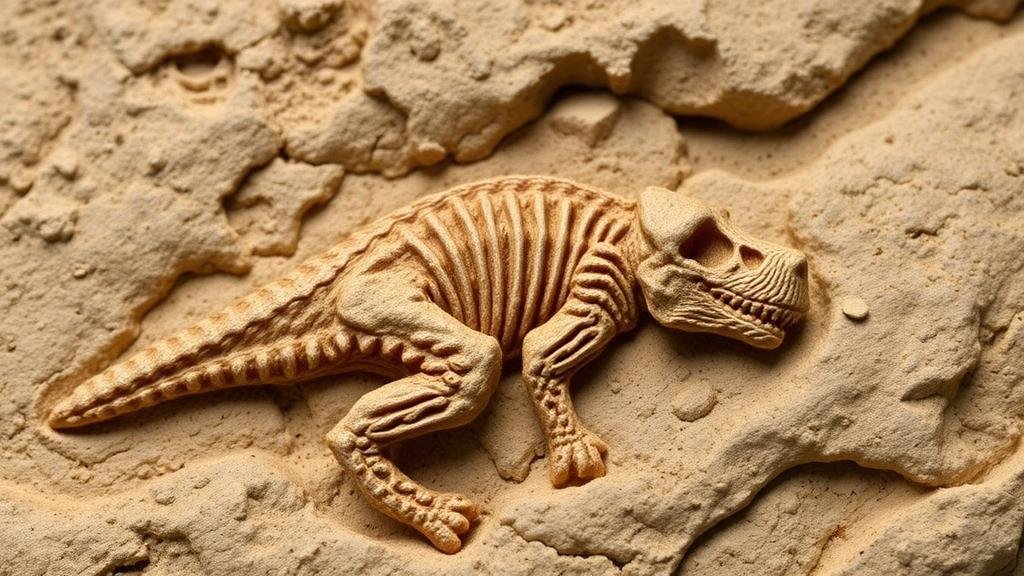Exploring National Park Fossil Databases for Little-Known Paleontological Treasures
Exploring National Park Fossil Databases for Little-Known Paleontological Treasures
The study of fossils offers a glimpse into Earths biological history, revealing the complexities of evolution, extinction, and the environments in which ancient organisms thrived. National parks across the United States serve not only as vast landscapes for recreation and conservation, but also as treasure troves of fossilized remains waiting to be unearthed and studied. This article aims to explore the significance of national park fossil databases, the treasures they hold, and the methods to access and analyze these resources for both academic and public interest.
The Importance of Fossil Databases
Fossil databases play a crucial role in paleontology, providing researchers with organized access to fossil data. e databases enhance our understanding of biodiversity, ecological interactions, and evolutionary processes. As of 2023, the National Park Service (NPS) maintains several databases that catalog fossil locations, descriptions, and conditions. Notably, the NPS identifies over 235 fossil sites nationwide, with many still unexplored.
Little-Known Fossil Sites in National Parks
While some fossil sites are widely recognized, such as the La Brea Tar Pits or the Badlands of South Dakota, numerous lesser-known locations also offer invaluable insights. For example:
- Big Bend National Park, Texas: Hosts fossilized remains from the Late Cretaceous period, including dinosaur remains and ancient marine reptiles.
- Grand Canyon National Park, Arizona: Contains fossils dating back to over 500 million years, representing marine invertebrates that provide context for the Cambrian explosion.
- Petrified Forest National Park, Arizona: Renowned for its fossils of ancient conifer trees, offering views into prehistoric ecosystems.
Exploration of these lesser-known fossil sites not only enriches scientific knowledge but also aids in conservation efforts, promoting awareness of the geological history encompassed within these parks.
Research Methodologies and Tools
Accessing Fossil Databases
Researchers interested in exploring these resources may access NPS databases through various channels. The primary tool is the NPS Data Store, which offers a searchable platform for locating fossil records. Researchers can filter by park, type of fossil, and geological age, allowing for targeted inquiries. Also, platforms like the PaleoPortal provide comprehensive fossil collections and paleontology-related research.
Data Analysis Techniques
Once accessed, analyzing the fossil data requires robust methodologies, including:
- Geospatial Analysis: Utilizing Geographic Information Systems (GIS) to map fossils and correlate them with historical environmental conditions.
- Radiometric Dating: Techniques such as carbon dating can be applied to provide precise age estimates for fossil materials.
- Comparative Morphology: Examining physical characteristics of fossils against existing specimens to improve classification accuracy.
These methodologies allow for comprehensive studies contributing to an understanding of paleobiology and geology.
Case Studies: Significant Discoveries
Several case studies exemplify the potential of fossil databases in yielding important paleontological discoveries:
- The Discovery of the Jurassic Dinosaur: In 2015, paleontologists utilized data from Yellowstone National Park to identify new dinosaur species, indicating rich Cretaceous ecosystems.
- Paleoecological Insights from Glacier National Park: Fossil records documented in 2018 revealed patterns of ancient vegetation which inform current climate change studies.
These examples illustrate how fossil databases are integral to advancing our knowledge of paleontological history and its relevance to todays environmental challenges.
Challenges and Future Directions
Despite their importance, fossil databases face challenges such as funding limitations, insufficient accessibility, and the threat of climate change on fossil preservation. The National Park Services efforts to digitize records and engage volunteers for data collection are crucial steps in addressing these challenges.
Future directions for research include:
- Enhancing public engagement through educational programs that raise awareness of fossil conservation.
- Expanding collaboration among academic institutions to increase the scope and scale of fossil studies.
- Useing advanced technologies, such as machine learning, to analyze fossil data patterns more efficiently.
Conclusion
The exploration of national park fossil databases uncovers numerous little-known paleontological treasures that deepen our understanding of Earth’s history. By employing a range of methodologies and encouraging collaboration, researchers can transform these databases into valuable resources for both academic research and public education. Protecting these fossil sites while promoting their scientific potential will ultimately benefit future generations, ensuring that history is preserved and studied.
Actionable takeaways for researchers and the public include:
- Engage with national park resources to discover and explore local fossil sites.
- Participate in volunteer opportunities offered by parks for cataloging and preserving fossils.
- Stay informed about advances in paleontological research and methods to contribute to ongoing studies.



